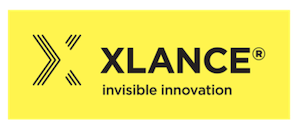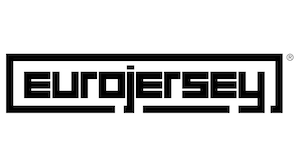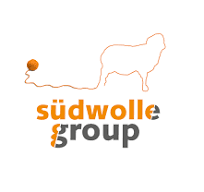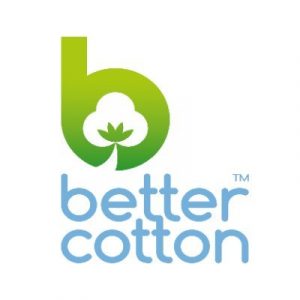 By Rohit Dev Sethi
By Rohit Dev Sethi
The textile industry, historically rooted in labor-intensive processes, is undergoing a significant transformation as automation technologies gain traction across the supply chain. Among the most impacted areas is warehouse management — a critical node in ensuring timely production, distribution, and customer satisfaction. Automation in textile warehouses offers a range of opportunities to improve efficiency, reduce costs, and enhance accuracy, but it also comes with unique challenges that require careful consideration by stakeholders.
One of the primary opportunities brought by warehouse automation is improved operational efficiency. Automated systems, such as robotic arms, automated guided vehicles (AGVs), and conveyor systems, can handle repetitive and laborious tasks such as picking, packing, sorting, and storing textile goods. This speeds up order processing and minimizes human error, which is particularly crucial in textile warehousing where managing large volumes of SKUs (Stock Keeping Units), varying fabric types, and color shades requires precision. With the integration of warehouse management systems (WMS) and real-time inventory tracking, textile businesses can achieve better visibility over their stock, reducing the risks of overstocking or stockouts and optimizing the use of warehouse space.
Labor cost reduction is another significant benefit. As wages rise and labor shortages become more pronounced — especially in developed economies — automated solutions present a long-term strategy to reduce dependency on manual labor. This is particularly relevant in textile hubs where warehouse operations can be seasonal and require quick ramp-ups in manpower, such as during festive seasons or fashion cycles. Automation helps maintain consistent productivity levels regardless of labor market fluctuations.
In addition to efficiency and cost savings, automation also enhances workplace safety. Warehouses often involve heavy lifting, repetitive motion, and long shifts — factors that contribute to worker fatigue and injuries. Automated systems reduce the exposure of workers to hazardous tasks, allowing them to focus on supervision, system monitoring, and quality control. This shift not only improves safety outcomes but also enables upskilling of the workforce towards higher-value roles.
Moreover, automation aligns with the growing emphasis on sustainability in the textile sector. Automated systems can be programmed to reduce energy consumption by optimizing lighting and HVAC usage based on activity levels. Efficient routing and smart inventory placement can reduce movement within the warehouse, cutting down on energy use and emissions. By improving overall supply chain responsiveness, automation also helps in reducing wastage caused by overproduction or delays.
Despite these advantages, the path to automation in textile warehouses is not without challenges. One major hurdle is the high capital investment required. Implementing robotics, AI-powered systems, and infrastructure changes can be prohibitively expensive for small and medium-sized enterprises (SMEs), which form the backbone of the textile sector in countries like India, Bangladesh, and Vietnam. These businesses often operate on tight margins and may find it difficult to justify the upfront costs, even if the long-term gains are promising.
Integration of automation with existing systems also poses a challenge. Many textile warehouses still operate with legacy systems or manual processes. Bridging the gap between traditional setups and new-age technologies requires not only financial investment but also technical expertise and change management. Without a clear roadmap, businesses may face disruptions during the transition phase.
Another concern is workforce displacement. While automation can create new types of jobs, it also risks displacing a significant number of warehouse workers, especially those with limited digital or technical skills. This is a particularly sensitive issue in labor-intensive economies where textile jobs provide livelihoods to millions. To address this, companies must invest in reskilling and training programs to help workers transition to roles in system monitoring, maintenance, and data analysis.
Data security and technological reliability are also crucial issues. As warehouses become more reliant on digital systems and interconnected devices, the risk of cyberattacks and system failures increases. A glitch in the system can paralyze warehouse operations, leading to delays and revenue losses. Therefore, ensuring cybersecurity and maintaining system redundancies become essential parts of automation strategies.
Finally, one must consider the nature of textile products themselves. Unlike rigid products, textiles are soft, variable in shape and texture, and often require careful handling to avoid damage or creasing. This makes robotic automation in textiles more complex than in industries like electronics or packaged foods. Advanced machine vision and AI are needed to identify, sort, and handle different textile materials without compromising their quality.
In conclusion, automation in textile warehouses holds immense promise for transforming the industry by enhancing productivity, accuracy, and sustainability. However, the adoption of such technologies must be balanced with careful planning, inclusive workforce strategies, and appropriate investment to ensure a smooth and equitable transition. For the textile sector to fully capitalize on the benefits of automation, a collaborative approach involving manufacturers, technology providers, policymakers, and labor organizations will be key.
 Editor’s Note: Rohit Dev Sethi is managing director at India-based ColossusTex
Editor’s Note: Rohit Dev Sethi is managing director at India-based ColossusTex
May 13, 2025
 WASHINGTON — May 14, 2025 — The Plastics Industry Association (PLASTICS) applauds Chairman Jason Smith (R-Mo.) and the House Ways and Means Committee for advancing tax provisions that support U.S. manufacturing, drive innovation, and promote long-term certainty and job creation.
WASHINGTON — May 14, 2025 — The Plastics Industry Association (PLASTICS) applauds Chairman Jason Smith (R-Mo.) and the House Ways and Means Committee for advancing tax provisions that support U.S. manufacturing, drive innovation, and promote long-term certainty and job creation.

















